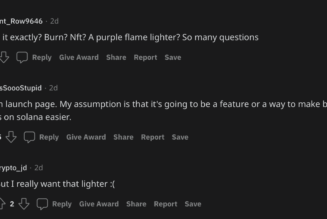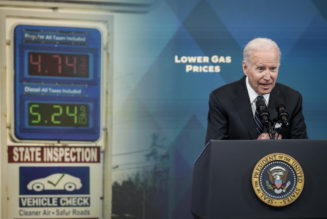The trade dilemma presents Biden with the difficult choice of either making good on his promises to prop up domestic manufacturing, including good-paying jobs making solar panels, or his other campaign pledge to go full speed ahead on moving the United States’ energy away from fossil fuels.
Even the mere prospect of new trade restrictions has prompted solar installers, who are already facing supply issues and higher labor costs, to pull back on some projects. At the same time, Biden wants to avoid being seen to be weak on China — another centerpiece of his campaign pitch and early policy agenda.
The conflict pits parts of the solar industry against each other. American solar panel manufacturers are petitioning to expand existing tariffs on Chinese products to those coming from Malaysia, Thailand and Vietnam. Backers of the tariffs and trade restrictions say they would allow panel makers in the U.S. to expand production. Added duties would also accomplish another of Biden’s goals: punishing China over the use of forced labor.
But the Solar Energy Industries Association, which represents developers that install panels and build solar projects, says imposing tariffs on those three nations would hit more than three-fourths of imports and about half of the total solar panel supply in the U.S. “That would have a pretty devastating impact on the solar industry,” said Abby Hopper, CEO of the trade group.
The trade association says if the new duties on panels from the Southeast Asian nations are approved, it could slash the rollout of solar in the U.S. by nearly a third over the next two years. The move would also slash jobs for solar project developments by 45,000 from where they would otherwise be in 2023.
Duties on the three additional countries would be “absolute industry killers,” warned Ben Catt, CEO of Pine Gate Renewables, a North Carolina-based solar project developer. “If you were to put those tariffs on any of the projects we are doing right now, I just think the pricing structure gets thrown out the window.”
Commerce must decide by Thursday whether it will dismiss the Southeast Asian solar petitions or open an investigation that could result in tariffs. If Commerce finds that importers are avoiding tariffs on solar panels by simply rerouting their goods through the Southeast Asian nations, by law it must impose duties.
That’s what the petitioners say is happening. They also argue that Biden’s lofty climate aspirations are “outside the scope of the case,” said Tim Brightbill, an international trade partner at Wiley Rein LLP, who is representing the petitioners. He also dismissed the dire employment and solar deployment figures predictions presented by the developers.
“This administration’s goals of climate action are wholly consistent with the goals of building the solar supply chain and returning it to the United States,” said Brightbill, noting that solar deployment continued to grow in the U.S. after the Obama administration imposed import tariffs in 2012.
Commerce and the administration have wiggle room to cushion the impact of any tariffs. When panels or components are shipped from China to the Southeast Asian nations, they typically undergo some sort of assembly or modification. U.S. solar panel makers complain that work is too minor to allow them to avoid the tariffs on Chinese panels, but Commerce staff could reject that argument for some or all of the companies named in the petitions. The administration could also apply lower tariff rates than those currently in effect for Chinese imports.
Solar developers say they have had discussions with Biden administration climate officials about the potential for tariffs and trade restrictions to slow solar growth stateside. The White House did not make anyone available to comment despite repeated requests.
China tariffs, trade restrictions add anxiety
Other trade issues before the administration could also hamper solar build-out. Commerce is weighing whether to extend separate Trump-era tariffs on Chinese solar for another four years, and the Department of Homeland Security is considering whether to increase trade restrictions on Chinese panel components, like it did this summer.
In June, the Biden administration blocked the import of products containing silicon materials from a key Chinese supplier, Hoshine, over concerns it uses forced labor in its manufacturing. The company operates in the northwestern Chinese region of Xinjiang, where the ruling Communist Party has interned hundreds of thousands of ethnic Uyghur Muslims.
The policy has resulted in Customs and Border Protection detaining some shipments of solar panels coming in from China.
“What we’re hearing from developers and customers is that there are projects that are on hold because their modules are sitting in a port,” said Hopper. “But there’s also projects that are on hold or being delayed because there’s uncertainty about whether their modules are going to get here.”
Solar companies are also facing added costs from existing tariffs on steel and aluminum, rising commodity prices and supply chain issues affecting businesses across the economy. As a result, the industry group said recently that the installed price of solar panels in the U.S. is now increasing slightly, after two decades of steady declines.
“That kind of uncertainty and volatility and the risk and the exposure on price ironically adds cost, because people start pricing in risk,” Hopper said. “And risk is expensive.”
Backers of the solar tariffs say that those price declines came in large part because during the Obama administration the solar sector outsourced its production almost completely to China, where about 80 percent of panels and their components still originate. Many panels and parts come from the northwestern Chinese region of Xinjiang, the epicenter of forced labor and other human rights abuses in China. Though some American manufacturers are expanding production, bringing enough capacity online to meet booming U.S. solar demands will take years.
“We can’t go back to the days of only wanting the cheapest solar panels without caring where they’re coming from or how they’re made,” Brightbill said.
Developers say there simply aren’t enough American panels available. Catt said his firm would love to use domestically sourced panels, but the U.S. manufacturing base still can’t serve the whole industry, especially in the short term while new factories are built. Backers of the petition, meanwhile, say more manufacturing capacity would come online if regulators would crack down on unfair pricing from foreign competitors.
Solar installers pull back on projects
Developers like Pine Gate are already pulling back on planned projects because they don’t know what the pricing or availability of panels will be in the next few years.
“We either need to be extra conservative in the bidding processes or mothball projects outright, so stuff just doesn’t get built,” he said. “The risk for us to have to forecast what the tariff regime is going to be in three years is too big for us to outlay some of the expenditures.”
Demand for solar panels in the U.S. should increase if Congress passes the Democrats’ reconciliation package, which includes a Clean Energy Performance Plan that would mandate huge increases in carbon-free energy each year.
That package also contains funding to kick start domestic solar panel manufacturing, along with plants for advanced batteries, but the fate of those provisions and the overall package remains in flux.
Meanwhile, solar developers are struggling to work through their own supply chains to identify which of their myriad suppliers in China are involved with forced labor or other violations.
“Performing that due diligence has proved to be difficult for a variety of different reasons,” said Richard Mojica, a former CBP trade lawyer who now represents solar panel importers.
Some Chinese vendors are resistant to providing information about their suppliers, he said, because they don’t want to run afoul of Chinese law that prohibits cooperation with American sanctions. Other times, the Chinese suppliers don’t know where their raw materials come from, or simply don’t feel compelled to handle tracing requests from U.S. companies because of demand elsewhere.
“I have been told that many polysilicone suppliers in China are not rushing to provide this information because they are plenty busy supplying the Chinese market and others,” Mojica said.
Legislative fixes uncertain
Reform to the CBP enforcement process may be coming. The Senate’s anti-China economic development bill contains the Uyghur Forced Labor Prevention Act, S.65 (117), which would ban all imports from the Xinjiang region. But it also contains corporate-friendly changes to the trade restriction process that Mojica and others say will make it easier for companies to prove their products are not made with forced labor. Like the reconciliation package, that bill faces an uncertain future.
In the face of multiple trade headwinds, solar installers stress that the climate impacts of more expensive panels will be serious.
Many blue states with renewable energy mandates will likely continue adding solar in spite of the added tariff costs. But solar projects most likely to fall by the wayside are in places like the Midwest and Southeast U.S., where solar has begun to displace coal and gas-fired power plants. That will mean most lost projects will likely be replaced by fossil fuel generation, rather than other forms of renewable energy.
“The end buyer is saying that [the electricity] could have come from natural gas, it could have come from solar — I don’t care, I’m buying the cheapest one,” Catt said. “You’re already there with renewables if you take away all the noise of the trade issues.”
Kelsey Tamborrino contributed to this report.









